Want to hear more from the actors and creators of your favorite shows and films? Subscribe to The Cinema Spot on YouTube for all of our upcoming interviews!
Managing editor & film and television critic with a Bachelor's of Arts in English Literature with a Writing Minor from the University of Guam. Currently in graduate school completing a Master's in English Literature.
Over two years after his 2020 science-fiction horror, Possessor, Brandon Cronenberg returns with a new freakish project, Infinity Pool.
Written and directed by the young Canadian filmmaker, the film follows a failed novelist, James Foster (Alexander Skarsgård), and his wife Em (Cleopatra Coleman) as the former searches for inspiration for a new story in the fictional seaside country, Li Tolqa. There, they meet another vacationing couple, Alban Bauer (Jalil Lespert) and Gabi Bauer (Mia Goth), who introduces the husband and wife to a local tradition. At times, the film can be twisted and confusing in its Gothic nature, yet makes for a tantalizing narrative.
In this review, I will be discussing Brandon Cronenberg’s third feature-length horror title, Infinity Pool. Minor spoilers ahead. Please read ahead at your own discretion.
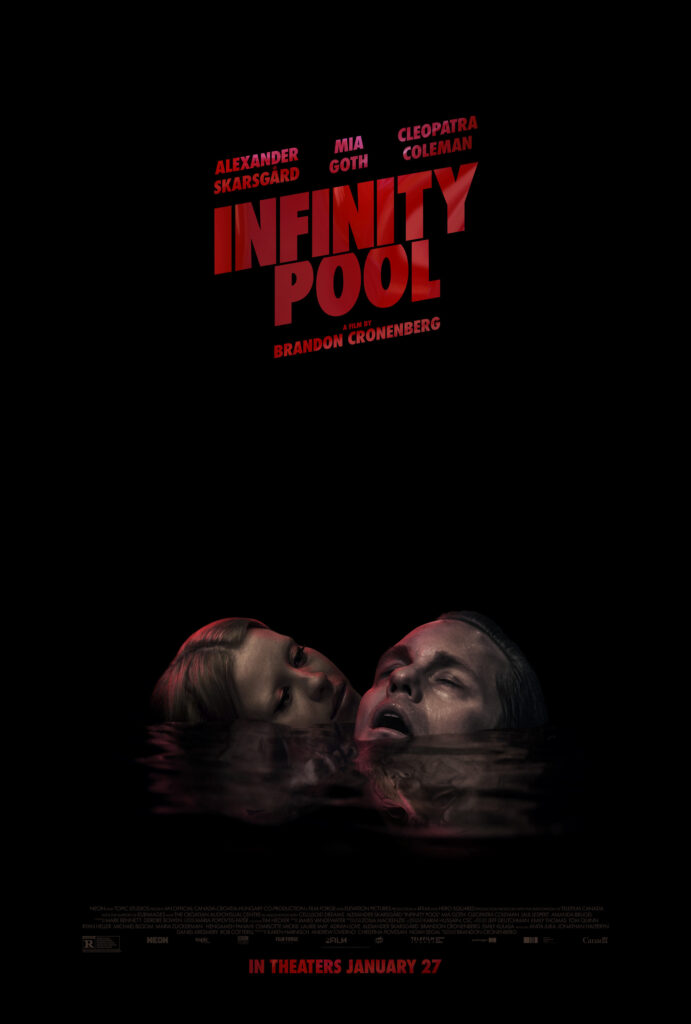
Discussion
Like Cronenberg’s previous two science-fiction horror projects, Antiviral and Possessor, Infinity Pool revolves around the madness of what the human body can be capable of. With Antiviral, celebrities can spread viruses and other diseases as well as grow human meat out of their bodies’ cells–both as a means of a stronger connection with their fans. In Possessor, an implant is used for one person to usurp the physical, physiological, and psychological systems of another human body. Meanwhile, Infinity Pool–like the very concept of infinity pools–has a missing edge, and what is in it can flow out into what we can only assume is infinity.
Cronenberg does play around with this idea through the Li Tolqan hotel resort and the country outside of its grounds. The only thing separating the two is the former’s razor-wired gates. One character explains that the country is generous with discipline. This means that tourists can practically get away with anything. Of course, James Foster (Skarsgård), the Bauer couple (Lespert and Goth), and a few others use this to their advantage to overstep boundaries, where the possibilities for law-breaking are endless. Thus, a metaphorical pool that flows out into infinity.
The film is twisted in this way. Such is the case in the opening scene when Hussain’s camera moves as if an infinity symbol. Not only do we get a convoluted view of the world, but it is an uneasy one as well. Robinson and Vandewater also help provide viewers with a few wicked and trippy visual sequences to maintain that feeling of discomfort. They are akin to some scenes in Cronenberg’s prior film, Possessor, including one where a character undergoes a possession process.
The Gothic Through Doubles and Masks
The film does not have a brisk pace to itself. Although, matters within the plot do get more intense once Foster commits his first crime. When he does get caught, he is told that his punishment is to have a physical double made of him through a cloning process, and then have that double be executed as the original individual watches. The concept of the double originates from the Gothic movement, an era of thought that predates horror, such as Oscar Wilde’s novel, The Picture of Dorian Gray. Right before we hit the film’s midway point, Foster and the other affluent tourists steal and don local masks previously worn by the hotel employees.
As a matter of fact, doubles are a form of masking. According to Australian author, Alexandra Heller-Nicholas’s critical text, Masks in Horror Cinema: Eyes Without Faces:
Masks … are faces-that-are-not-faces. … [U]ncanny imagery in gothic horror practically manifests through ‘repetitions, returns, … doppelgängers, animated inanimate objects …’ Of particular interest are doppelgängers, crucial to any consideration of masks in horror. Meaning ‘double’ or ‘duplicate’ in German, [the term doppelgänger] relates a secondary identity or personality who in the gothic context tends to be a baser or more evil version of the original, more civilised version. The doubling processes that govern the practical split between original/doppelgänger can be created through errors in identification often linked to doubling scenarios that hinge around disguise. … Masks transform their wearers into the masked and unmasked.
“Introduction”, page 15 of Alexandra Heller-Nicholas’s ‘Masks in Horror Cinema: Eyes Without Faces’
On one hand, the film begins with Foster in a sane state of mind, for lack of a better term. However, on the other hand, it concludes with Foster, or at least perhaps, a shell of who he once was. This begs us to ask ourselves about the larger picture of this picture.
The Bigger Question
When Foster meets the other tourists, one of them–Dr. Bob Modan (John Ralston)–asks him, out of curiosity, if it could be that the wrong James Foster was cloned and killed. Maybe the Foster who is alive is the clone and it is the original Foster who was executed. That is, the “baser or more evil” Foster is the one who has become double and switched places with the original man. Of course, it might be confusing to understand Foster’s side of the matter since he, like the other tourists, wears a mask–one that is both physical and figurative.
Heller-Nicholas also cites Lancaster University professor Catherine Spooner, who suggests:
Masks and veil simultaneously reveal and conceal: they foreground the interface between inside and outside, the seen and unseen, the self and the world’. … [I]f masks and other disguises ‘evoke doubleness, their horror frequently lies in its collapse in the control of the mask or the disguise, so that it estranges the bearer from [their] original identity, entrapping [them] in a role experienced as alien to the self’.
“Masks and Horror in Literary and Performance Traditions and Early Cinema”, page 51 of Alexandra Heller-Nicholas’s ‘Masks in Horror Cinema: Eyes Without Faces’
It could be that Raaphorst and Pohárnok’s unique yet terrifying mask creations distract us from the true message. (The first mask shown in the little sequence triggers my trypophobia, but we will leave that out of the discussion.) If Foster is already double, does the mask cancel out his dark side or does it enhance it? Using what Spooner says, it is possible that Foster’s being crumbled within the mask, and, as was said earlier, he resulted in a mere shell of his self.
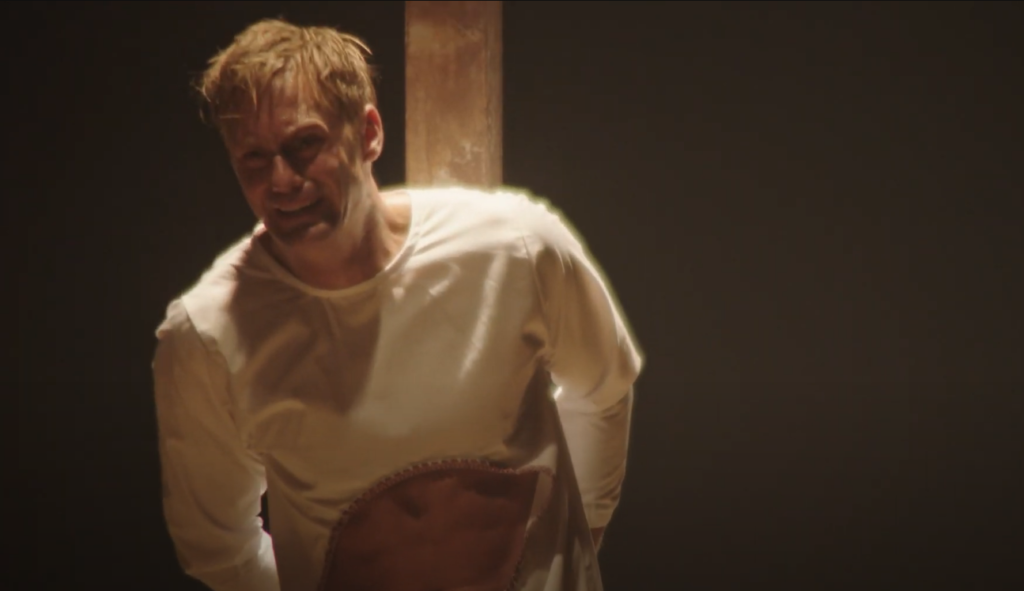
The Crew Behind Infinity Pool
Karen Harnisch, Andrew Cividino (Schitt’s Creek), Christina Piovesan, Noah Segal (Ginger Snaps, Possessor), Rob Cotterill (Hobo with a Shotgun, Antiviral, The Lighthouse, Possessor), Anita Juka, Daniel Kresmery, and Jonathan Halperyn serve as the producers of Infinity Pool.
Jeff Deutchman (Spencer, Crimes of the Future), Emily Thomas, Tom Quinn (The ABCs of Death, Only God Forgives, Spencer, Crimes of the Future), Ryan Heller (Spencer, Nanny, Shortcomings), Michael Bloom (Spencer, Nanny, Shortcomings), Maria Zuckerman (Spencer, Nanny, Shortcomings), Laurie May (Choke), Adrian Love (Possessor), Alexander Skarsgård, Brandon Cronenberg, Emily Kulasa, Hengameh Panahi, and Charlotte Mickie are the executive producers.
Brendan Gunn serves as the co-executive producer.
Karim Hussain (Hobo with a Shotgun, Antiviral, The ABCs of Death, Possessor, Orphan: First Kill) is the film’s cinematographer. James Vandewater (V/H/S/94) is the editor.
Music and Casting
Tim Hecker composes the music for the film.
Alex Bullick (Jonah: A VeggieTales Movie, Wrong Turn, Resident Evil film franchise, The Adventures of Sharkboy and Lavagirl, Push, Saw 3D, FX’s Fargo, The Shape of Water, American Gods) and Jill Purdy (Cube, Land of the Dead, Mother!, Scary Stories to Tell in the Dark, Nightmare Alley, Crimes of the Future, The Whale, Knock at the Cabin) are the supervising sound editors.
Robert Bertola (Halloween: Resurrection, Horns, Crimson Peak, FX’s Fargo, Crimes of the Future) and Craig MacLellan (American Gods, Nightmare Alley) are the sound effects editors.
Simon Miminis (Jigsaw, Spiral: From the Book of Saw) is the music editor.
Mark Bennett (Cursed, Stay Alive, The Hurt Locker, Zero Dark Thirty, It Follows, C’mon C’mon) and Deirdre Bowen (The Dead Zone, The Fly, Dead Ringers, Billy Madison, Crash, Silent Hill film franchise, Antiviral, Enemy, Possessor, Crimes of the Future) serve as the casting directors. Christopher Richards is the casting associate, while Lorand Banner and Ralph Berkin are the Hungary casting directors. Nevena Grubelić is the casting assistant.
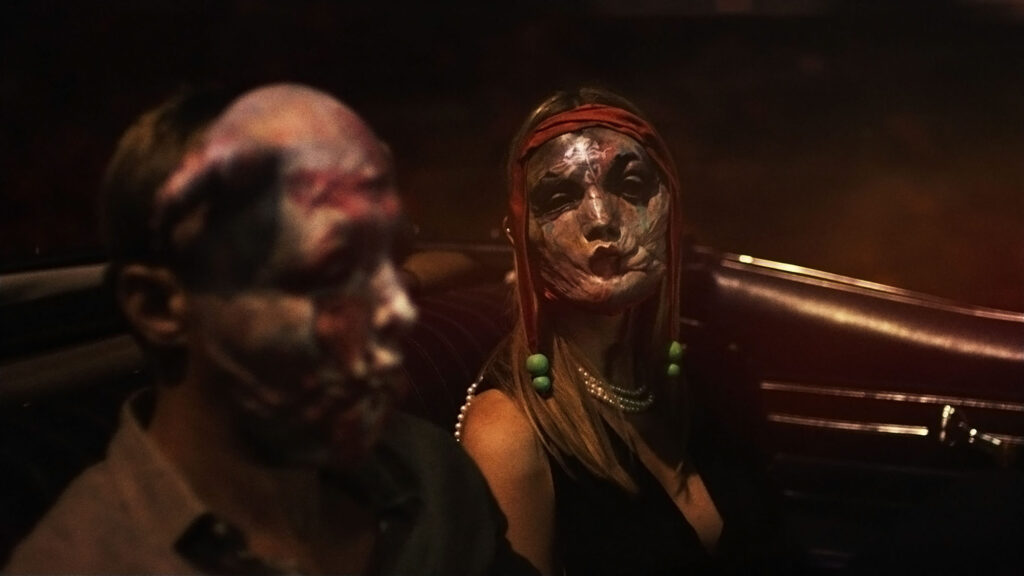
Aesthetics
Zosia Mackenzie (V/H/S/94) serves as the production designer of the film. John O’Regan is the supervising art director, while Clara Farkas and Zvonko Sarić are the art directors.
Dávid Engert (The Last Kingdom) and Anna Sütö are the set designers. Zoltán Frank and Jelena Raguž are the set decorators. Rita Hetényi (Midsommar) and Borbála Elek are the assistant set decorators.
Mária Popovits-Fatér is the costume designer. Alexandra Csörgö and Rozina Pusztai are the assistant costume designers.
Dan Martin (ABCs of Death 2, The Strangers: Prey at Night, In the Earth, Dashcam, Swallowed, A Wounded Fawn, Jungle) serves as the special makeup and figurative effects artist. Svetlana Gutić (Star Wars: Episode VIII — The Last Jedi) is the makeup designer. Rita Spragg is the head of the makeup department. Szilvia Homolya (Terminator: Dark Fate, The Unbearable Weight of Massive Talent) is the key makeup artist. Traci Loader (Land of the Dead, The Witch, Possessor, Spiral: From the Book of Saw, Clarice, Y: The Last Man, The Last of Us, Star Trek: Strange New Worlds) is the key special effects makeup artist.
Daniel Losco (Titans) serves as the hair designer. Chantel Pereira is the key hairstylist, while Szabolcs Szöke (Paramount+’s Halo) and Anna Törjék (The Crown, Midsommar) are the hairstylists.
Zoltán Brenner, Adrienn Mész, Liliana Osir, Ildikó Polgár, and László Solti play body doubles in the film.
Richard Raaphorst is the mask concept designer for the film, while Iván Pohárnok is the mask fabricator.
Andy Robinson (Wrong Turn, Harry Potter and the Deathly Hallows: Part 2, John Carter, World War Z, Army of the Dead, Fantastic Beasts: The Secrets of Dumbledore) does the visual effects for the film.
The Cast of Infinity Pool
Cleopatra Coleman (The Last Man on Earth, Dopesick, Rebel Moon) and Alexander Skarsgård (Zoolander film franchise, Battleship, Big Little Lies, The Stand, Godzilla vs. Kong, The Northman, Atlanta, Succession) portray the film’s main married couple, Em Foster and James Foster, respectively.
Jalil Lespert and Mia Goth (A Cure for Wellness, Marrowbone, Suspiria, The House, X, Pearl) portray another primary vacationing couple, Alban Bauer and Gabi Bauer, respectively. Amanda Brugel (Jason X, Orphan Black, TNT’s Snowpiercer, Kim’s Convenience, The Handmaid’s Tale) plays Jennifer. Jeffrey Ricketts (Buffy the Vampire Slayer, Angel, Kingsman: The Golden Circle) portrays Charles. John Ralston (Ready or Not) portrays Dr. Bob Modan. Caroline Boulton (FX’s Tyrant, The Unbearable Weight of Massive Talent, Paramount+’s Halo) plays Bex.
Zijad Gračić (Succession) plays Dro Thresh. Amar Bukvić (Hitman’s Wife’s Bodyguard) plays the resort cop, while Alan Katić plays State Police Officer 1. Thomas Kretschmann (Blade II, Resident Evil: Apocalypse, King Kong, Next, Wanted, Cars 2, Avengers: Age of Ultron) portrays Detective Thresh. Kamilla Fátyol (The Martian), Lena Juka Štambuk, and Kristóf Kovács play Myro Myron’s wife, daughter, and son, respectively.
Dunja Sepčić appears as Anna the cleaning woman, while Ádám Boncz plays Ketch.
Katalin Lábán plays a head nurse. Romina Tonković plays a receptionist. Hajnalka Zsigár (Black Widow) plays a maid. Gergely Trócsányi plays a homeowner, while Anita Major plays his mistress.
Géza Kovács (Hellboy II: The Golden Army, Skyfall, 47 Ronin, Star Wars: Episode VII — The Force Awakens, FX’s Tyrant, Atomic Blonde, Blade Runner 2049, Hanna, Midsommar, Gemini Man, Terminator: Dark Fate, Dune, Moon Knight) plays a bodyguard. Roderick Hill plays an angry guest, while Oszkár Bocsik (Black Widow) plays a bus driver.
Performances and Character Developments
Skarsgård has a rather fascinating role in this film, one that is unlike who he portrayed in Robert Eggers’s The Northman last spring. James Foster is a weak, uninteresting, and–dare I say–an unintelligent character from the start. These are his only constant traits from the beginning to the end. The only thing keeping this character in that captivating atmosphere is the other people whom he chooses to surround himself with. Although, it could also be the location of the hotel compound and Li Tolqa separated by the gate. Could it be the hotel masking itself from the country and its locals, or the country masking itself from the tourists?
I felt that it was difficult to see him in scenes with Coleman’s Em Foster. The marketing (and the hype) around the film led us to believe that he was with Goth’s character. In fact, there was some closure, pleasure, and relief in watching James Foster fail naturally, similar to Goth’s Gabi Bauer, an actress who does so for a living. However, Foster is not performing. Instead, simply put, he is the embodiment of failure, and he dies over and over again.
Justice via Juxtaposition: A Double? An Opposite?
Skarsgård does a great job at playing the role of a loser. In juxtaposition, Goth is a creepy kind of character, whose looks evoke trepidation and foreboding in the viewer. Even the iconic scene where the camera frames her pointing a gun at a character off-screen is chilling.
I have to give it to her: Mia Goth killed this role, even with her high-pitched voice of a Victorian child. I could argue that she is better in this film as Gabi Bauer than as Maxine Minx and Pearl in Ti West’s two recent slasher films, X and Pearl. The thing about this character is that, unlike Foster, she remains herself constantly throughout the film. Not that that is a good thing. It is just that you never really see Bauer lose herself (or to be specific, her self) in the process, and she stays immoral from the start to finish. I cannot wait to see if Goth can top this off in West’s upcoming film, MaXXXine!
Final Thoughts on Infinity Pool
Cronenberg has a potent story to tell with Infinity Pool. It almost seems to me that the film comes off as some kind of narrative straight from a Julio Cortázar story. Although, I do not think that that is on purpose. If it wasn’t for my studies in horror and Gothicism, I probably would not have understood the narrative all too well. To add to Heller-Nicholas and Spooner’s arguments about masks, it could be that the oscillation is the uncanny return to the hotel as well as the return to prison. The hotel gates could serve as that “interface” between the two and therefore can be seen as the masks.
On the surface, Infinity Pool‘s narrative isn’t as sturdy as the masked walls worn by the protagonist in Possessor. However, when digging deeper, there is something underneath worth breaking down, which is the depictions of human beings’ selves. If I were to rank his works, I would say that the filmmaker’s third project is just close enough to the second one in reaching the top.
If Infinity Pool is still in theaters, then I would recommend watching it as soon as possible. Otherwise, catch the film today via video-on-demand!
Have you seen any of Brandon Cronenberg’s films? If so, what are your thoughts on any of them? Let us know! For more crime, horror, mystery, and science-fiction-related news and reviews visit and follow The Cinema Spot on Facebook, Twitter, and Instagram!
Also, if you are waiting for a physical copy of Infinity Pool, why not purchase Cronenberg’s previous film, Possessor, online? Get it on Amazon today!
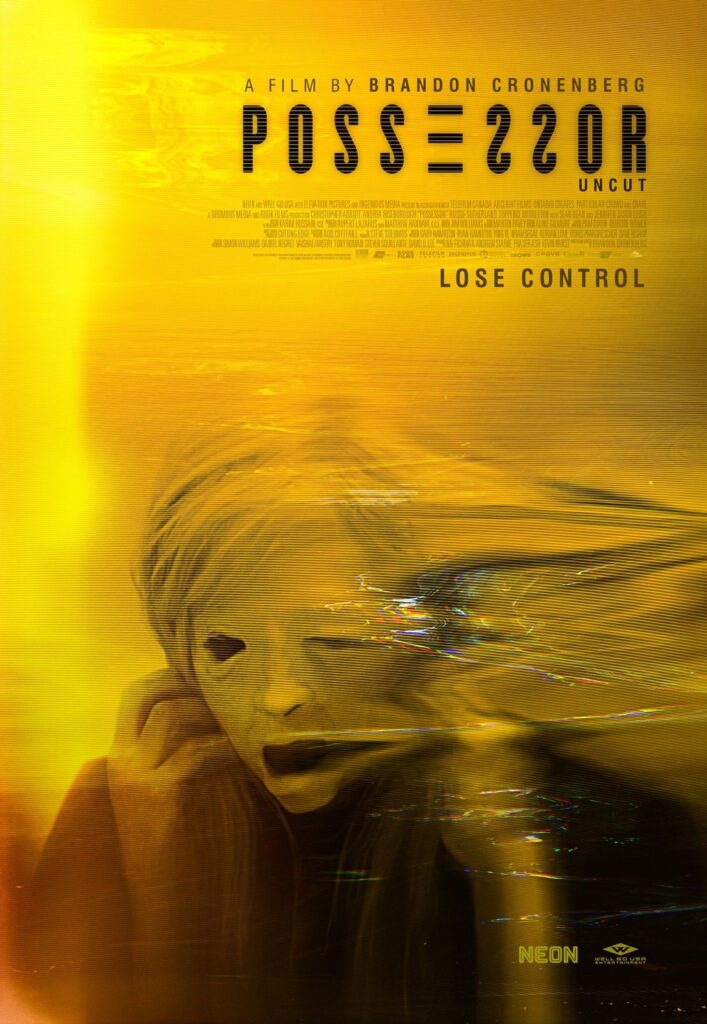
Managing editor & film and television critic with a Bachelor's of Arts in English Literature with a Writing Minor from the University of Guam. Currently in graduate school completing a Master's in English Literature.


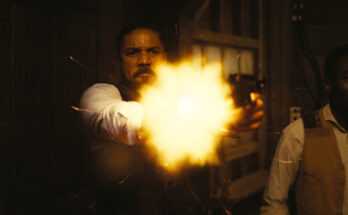


12 Comments on “‘Infinity Pool’ Non-Spoiler Review – Cronenberg Digs Deep To Discover The Double”